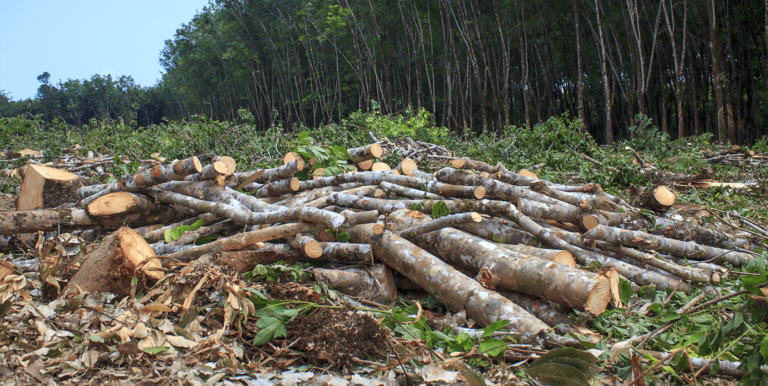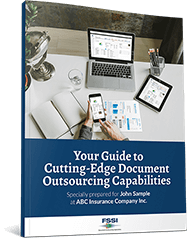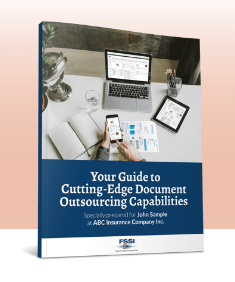Is The Paper and Packaging Industry Destroying Forests? – Myth Vs. Fact

Is Paper Use Really Bad for the Environment and is it Destroying our Forests?
Myth Vs. Fact Blog Series Part 1/8
We all want to be environmentally sensitive, and yet there are some myths that have grown up like bacteria in a broken refrigerator that have given print and mail a bad smell. We’d like to wipe those moldy shelves clean and in doing so, take a healthy look at what is actually happening in today’s print and mail industry.
First, let’s acknowledge that the internet has changed the way we communicate forever. Texting, scanning, replying to emails, paying eBills and responding to time-critical inquiries have given us all advantages our parents’ generation never dreamed of. This is not about rolling back the calendar and saying, ‘Those were the good ‘ole days.’ We now have a multitude of communication channel choices, and most of us use multiple modes every day in our increasingly high-tech lives.
This series is going to take some popular myths, which have almost become like urban legends and give you some mind-bending truth to throw back at your friends.
You are reading part 1 of 8 of the Myths Vs. Facts About Paper, Printing, and the Environment series. Check out the rest of this series
- The Paper and Packaging Industry is Destroying Forests
- Paper and the Environment
- Paper Industry’s Carbon Footprint
- Can Recycled Paper Be Reused Indefinitely?
- Will Replacing Print and Mail with Electronic Media will Save the Environment?
- Is Printing on Paper is the Definition of Waste?
- Are We Ready for a Paperless Society?
- Should We Get Rid of Paper Packaging?
Myth Vs. Fact #1 Does the Paper Industry Destroy Forests?
Myth #1: The paper and packaging industry is destroying our forests, making a fast buck at the expense of future generations.
Fact: Paper production supports sustainable forest management.
The North American Paper Industry promotes sustainable forestry and depends on sustainable forest growth to provide a reliable supply of wood fiber.
Paper manufacturers encourage forest sustainability through their purchase and use of certified wood fiber and by promoting sustainable forest management policies and practices at home and around the globe. As a result, by providing a dependable market for responsibly grown fiber, the paper industry encourages landowners to manage their forestland instead of selling it for development or other non-forest uses.
Paperless Statistics
Claims like, “go paperless, switch to eBilling to save a tree, hard copy printing destroys the forests, creates a false sense that forests are a finite resource. It is also a misconception that printing and mailing have high carbon footprints. The fact that people would rather receive electronic messages and printing should use recycled paper only, also creates the feeling that forests are on the verge of extinction. The reality is, that North American forests are a renewable resource that is continuously replenished using sustainable forest management. In fact, over the last six decades, the net total U.S. Forest area has increased by over 3%. In addition, the net volume of trees on timberland has increased by 58%. In Canada, the forest cover has remained stable over the last two decades and less than .05% of Canada’s forest resource is harvested each year.
Most pulpwood harvested in the U.S. (89%) comes from private land. The income landowners receive for trees grown on their land encourages them to maintain, sustainably manage, and renew this valuable resource.
What to Expect Next in the Environmental Paper Series (2 of 8)
Is paper really bad for the environment? We will be tackling this topic next in the Environmental Paper Series. Check back to follow this series or explore more blog posts.
FSSI
FSSI is a national, WBE-Certified document outsourcing company. We were among the first print-mail outsourcing companies to integrate sustainability practices into regular business operations. Consequently, the company has recycled or responsibly disposed of tons of reusable waste including paper, wooden pallets, electronics such as computer monitors, and other office equipment. For its work in reducing energy consumption, the company earned Trane North America’s “Energy Efficiency Leader Award.” FSSI also participates in the Carbon Disclosure Project (CDP), keepers of the world’s largest corporate emissions and climate change database, and recognized leader in greenhouse gas reporting. Visit the sustainable print production page to learn more about its ongoing commitment to environmental stewardship.

Sources:
Tsukayama, H. (2017, January 25). How bad is email for the environment? Retrieved August 07, 2017, from https://www.washingtonpost.com/news/the-switch/wp/2017/01/25/how-bad-is-email-for-the-environment/?utm_term=.147bb63b2329&wpisrc=nl_draw2&wpmm=1
Riebel, P. (2017, February 01). The Carbon Footprint of Email (Is Quite Large!). Retrieved August 07, 2017, from http://www.piworld.com/post/the-carbon-footprint-of-email-is-quite-large/
Two Sides U.S., Inc. (2013). Print and Paper Myths and Facts [Brochure]. Author. Retrieved from http://www.twosidesna.org/



